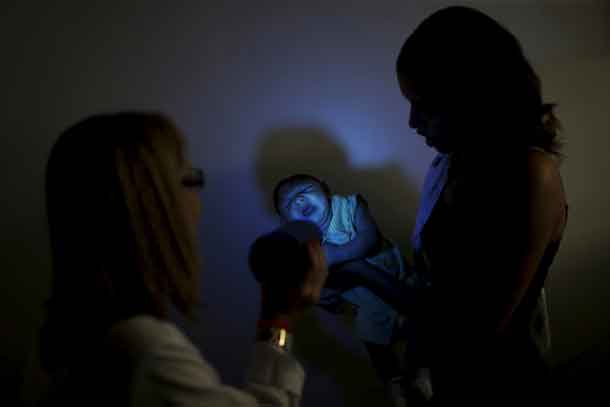

WINNIPEG, Manitoba (Reuters) – A vaccine for the deadly Zika virus in development by U.S. and Canadian scientists could be available for emergency use before the end of the year, possibly making it the first, one of the lead scientists said on Thursday.
The consortium working on the vaccine includes University of Pennsylvania, led by scientist David Weiner, University of Laval, led by Gary Kobinger, Inovio Pharmaceuticals Inc and South Korea’s GeneOne Life Science, Kobinger told Reuters in an interview.
He hopes to start trials by September to test its safety on humans, pending regulator approval. A month later it could be ready for emergency use.
The World Health Organization (WHO) said on Thursday the Zika virus, linked to severe birth defects in thousands of babies in Brazil, is “spreading explosively” and may infect 3 to 4 million people in the Americas, including 1.5 million in Brazil.
Zika Virus Information
Here are some facts about the virus and the current outbreak.
– The virus is transmitted to people through the bite of infected female Aedes mosquitoes, the same type of mosquito that spreads dengue, chikungunya and yellow fever. Efforts to control the spread of the virus include eliminating mosquito breeding sites and taking precautions against mosquito bites such as using insect repellent and mosquito nets.
– There is no treatment or vaccine available for Zika infection. People who get Zika virus disease typically have a mild fever, skin rash, conjunctivitis, muscle and joint pain and fatigue, with symptoms normally lasting for two to seven days. Most people never develop symptoms. U.S. health officials say the United States has two potential vaccine candidates and may begin human clinical trials by the end of 2016, but there will not be a widely available vaccine for several years.
– The virus has been linked to a devastating birth defect called microcephaly in which babies are born with abnormally small heads and brains that have not developed properly. The WHO said a direct causal relationship between Zika virus infection and birth defects has not yet been established but is strongly suspected. Local health authorities in Brazil in 2015 observed an increase in babies born with microcephaly at the same time as a Zika outbreak. About 4,000 cases of microcephaly have been reported in Brazil since September. Given an estimated 80 percent of people infected have no symptoms, it can be hard to tell if a pregnant woman has been infected. Research by Brazilian authorities indicates the greatest risk of microcephaly appears to be associated with infection during the first trimester of pregnancy.
– The WHO said Zika cases have been reported in 23 countries and territories in the Americas in the current outbreak. Brazil has been the nation most affected. The Pan American Health Organization said Aedes mosquitoes are found in all countries in the Americas except Canada and continental Chile, and the virus will likely reach all countries and territories of the region where Aedes mosquitoes are found.
– Zika virus is found in tropical locales with large mosquito populations. Outbreaks of Zika virus disease have been recorded in Africa, the Americas, Southern Asia and Western Pacific. The virus was first identified in Uganda in 1947 in rhesus monkeys and was first identified in people in 1952 in Uganda and Tanzania, according to the WHO.
– One case of possible person-to-person sexual transmission has been described but the Pan American Health Organization said more evidence is needed to confirm whether sexual contact is a means of Zika transmission. PAHO said there is currently no evidence the virus can be transmitted to babies through breast milk. PAHO said Zika can be transmitted through blood, but this is an infrequent transmission mechanism.
– The WHO says that because no big Zika outbreaks were recorded before 2007, little is known about complications caused by infection. Long-term health consequences remain unclear. It is uncertain whether in pregnant women the virus crosses the placenta and causes microcephaly. During an outbreak of Zika from 2013-2014 in French Polynesia, national health authorities reported an unusual increase in Guillain-Barre syndrome, a rare disorder in which the body’s immune system attacks part of the nervous system. Health authorities in Brazil have also reported an increase in Guillain-Barre syndrome. Other uncertainties surround the incubation period of the virus and how Zika interacts with other viruses that are transmitted by mosquitoes such as dengue.
(Compiled by Will Dunham; Editing by Frances Kerry)






